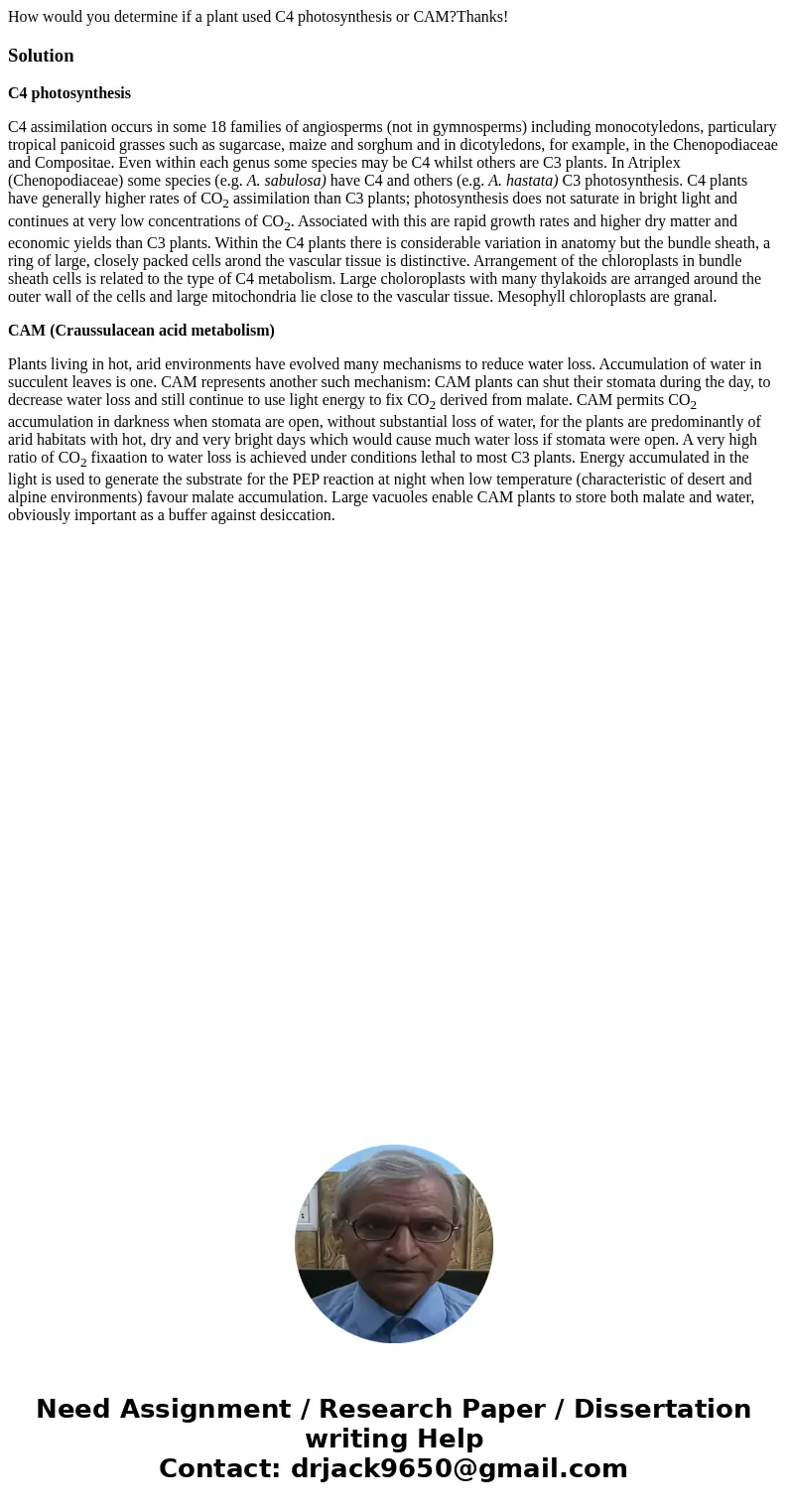How would you determine if a plant used C4 photosynthesis or
How would you determine if a plant used C4 photosynthesis or CAM?Thanks!
Solution
C4 photosynthesis
C4 assimilation occurs in some 18 families of angiosperms (not in gymnosperms) including monocotyledons, particulary tropical panicoid grasses such as sugarcase, maize and sorghum and in dicotyledons, for example, in the Chenopodiaceae and Compositae. Even within each genus some species may be C4 whilst others are C3 plants. In Atriplex (Chenopodiaceae) some species (e.g. A. sabulosa) have C4 and others (e.g. A. hastata) C3 photosynthesis. C4 plants have generally higher rates of CO2 assimilation than C3 plants; photosynthesis does not saturate in bright light and continues at very low concentrations of CO2. Associated with this are rapid growth rates and higher dry matter and economic yields than C3 plants. Within the C4 plants there is considerable variation in anatomy but the bundle sheath, a ring of large, closely packed cells arond the vascular tissue is distinctive. Arrangement of the chloroplasts in bundle sheath cells is related to the type of C4 metabolism. Large choloroplasts with many thylakoids are arranged around the outer wall of the cells and large mitochondria lie close to the vascular tissue. Mesophyll chloroplasts are granal.
CAM (Craussulacean acid metabolism)
Plants living in hot, arid environments have evolved many mechanisms to reduce water loss. Accumulation of water in succulent leaves is one. CAM represents another such mechanism: CAM plants can shut their stomata during the day, to decrease water loss and still continue to use light energy to fix CO2 derived from malate. CAM permits CO2 accumulation in darkness when stomata are open, without substantial loss of water, for the plants are predominantly of arid habitats with hot, dry and very bright days which would cause much water loss if stomata were open. A very high ratio of CO2 fixaation to water loss is achieved under conditions lethal to most C3 plants. Energy accumulated in the light is used to generate the substrate for the PEP reaction at night when low temperature (characteristic of desert and alpine environments) favour malate accumulation. Large vacuoles enable CAM plants to store both malate and water, obviously important as a buffer against desiccation.

 Homework Sourse
Homework Sourse